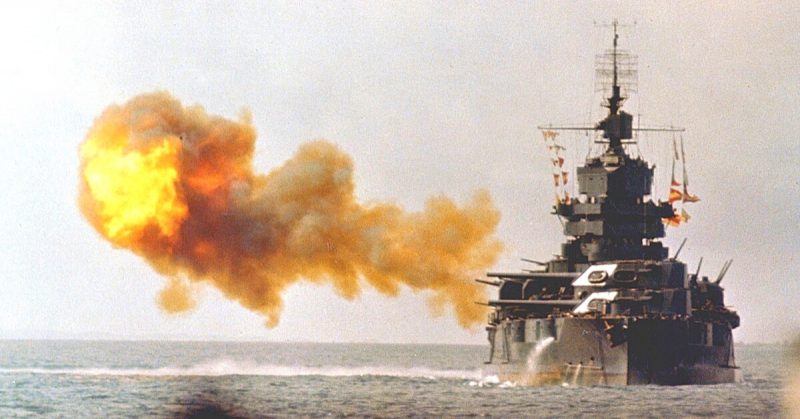Throughout 1944, Allied forces drove the Japanese from the countries they had occupied in the Pacific. By the beginning of 1945, they were within striking range of Japan itself and planning an invasion.
They chose the island of Okinawa, at the southern end of Japan, as the place to start. It was only 340 miles (550 km) from the Japanese mainland and would make a good base for air attacks on the Japanese mainland.
Okinawa was one of the most terrible battles of World War II. More people died in the Battle of Okinawa than in any other in the Pacific war.
The Japanese called the battle ‘tetsu no bōfū’ (violent wind of steel) or ‘testsu no ame’ (rain of steel), referring to the huge number of shells, tanks, planes, ships and other weapons used.
The Americans called it the ‘typhoon of steel.’ Japan lost 77,166 soldiers through combat or suicide, while the Allies lost 14,009. Many more soldiers on both sides were wounded, and civilian casualties in the battle numbered up to 150,000. Ninety percent of the buildings on the island were destroyed.
The battle started at the beginning of April. Four divisions of the U.S. 10th Army (7th, 27th, 77th, and 96th) and two divisions of Marines (1st and 6th) landed on the island, supported by warships and planes.
The fighting was ferocious, and attacks from kamikaze planes were intense. After 82 days of fighting, Okinawa fell to the Allied forces in the middle of June.
In August 1945 the Soviet Union declared war on Japan and invaded Manchuria. Around the same time atomic bombs were dropped on Hiroshima and Nagasaki, and almost two months after the Battle of Okinawa the Japanese government surrendered.
https://www.youtube.com/watch?v=lyMm1tkvKQo
